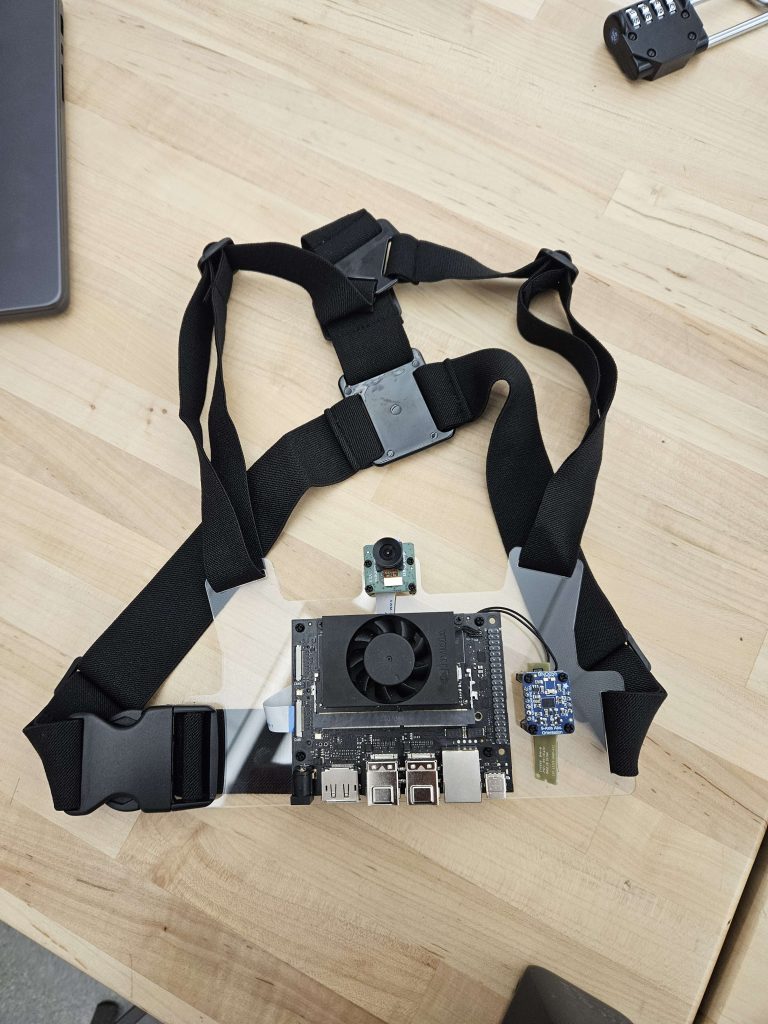This week, I focused more on fine-tuning the chest mount. We also continued working on integration and testing all our components. Last week’s changes to the chestmount were well received. We tested the chest mount of a few women, all of whom stated that the mount was secure and comfortable. This resolved our worries about non-flat chests being incompatible with our mounting design. The standoff components arrived, and I had to make some tweaks to the mounting dimensions to get them to work properly. However, after the modifications, everything works perfectly. Currently, the Jetson Orin Nano, camera, and IMU are nicely and securely mounted onto the chestpiece. One small issue was that I didn’t consider mounting the WiFi module, along with its antennas. These were connected to the original case. I had assumed that we would have our stuff running offline, so I thought I wouldn’t need to mount these. I will look into fully mounting these, but for now, they are safely tucked into the IMU standoffs. Lastly, I have begun testing the addition of neoprene padding for comfort.
The power bank also worked well, providing more than enough power to last the whole day (around 11 hours). With the components all nicely mounted to the chest mount, we were much more easily able to gather data. Previously, data collection needed to be done with two people, as we had to hold all the components together carefully. Now the device is basically hands-free, save for the laptop needed to SSH in and run the scripts. Hopefully, this can be replaced with a startup script once we finalize integrating all our software components together.
Regarding the schedule, I am in sync with the Gantt Chart. I aim to continue working to get all the components mounted to the chest mount. I expect to work through some issues with screw hole dimensions, so I have blocked out a decent chunk of time for iterating through designs.
As I designed, implemented, and debugged my project, I had to use some tools to fix issues with the camera. Specifically, I had to use nvarguscamerasrc, Argus daemon, GStreamer, and v4l2-ctl for debugging. Most of my knowledge for this was gained by using Google and the NVIDIA Developer Forums for people with similar issues. I also had to debug many issues by checking versioning issues with packages. This issue is still in progress, as we have some conflicts with what packages are needed.





